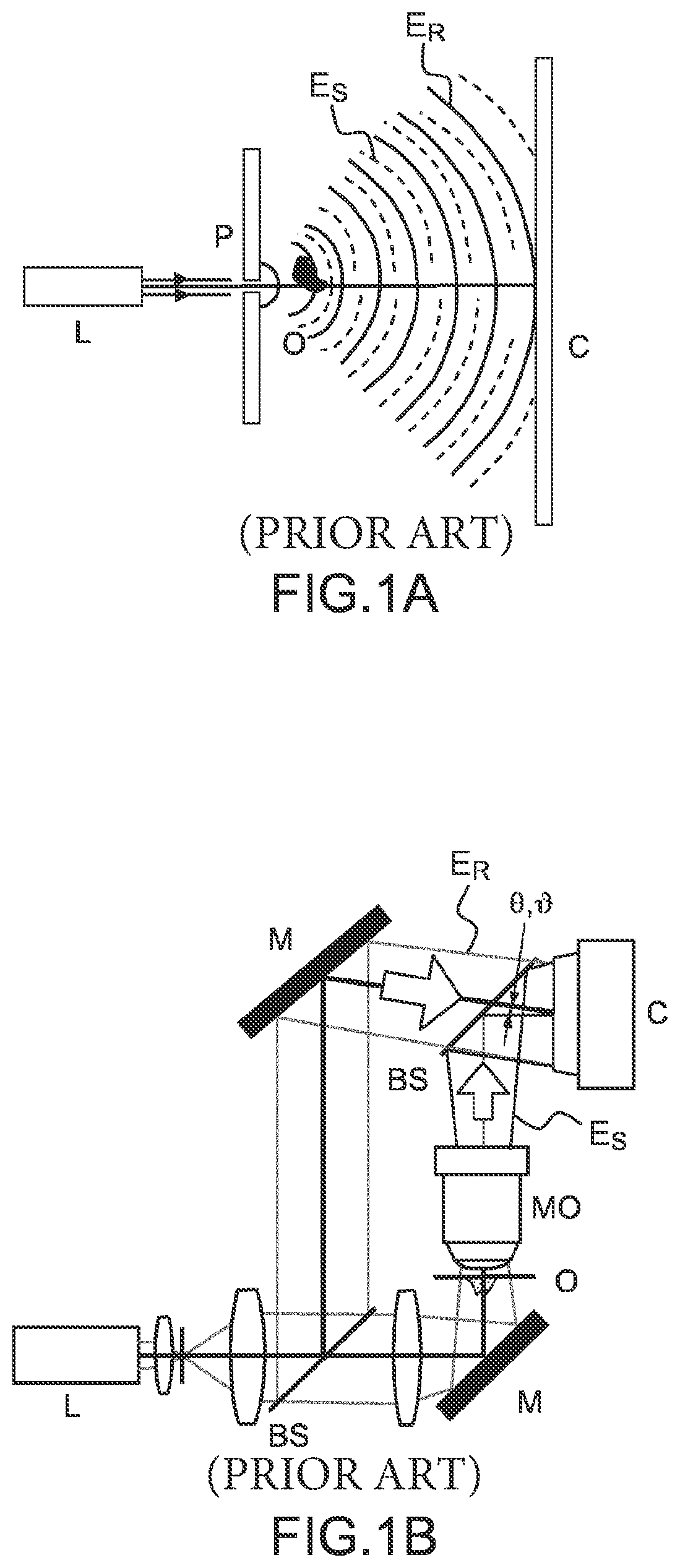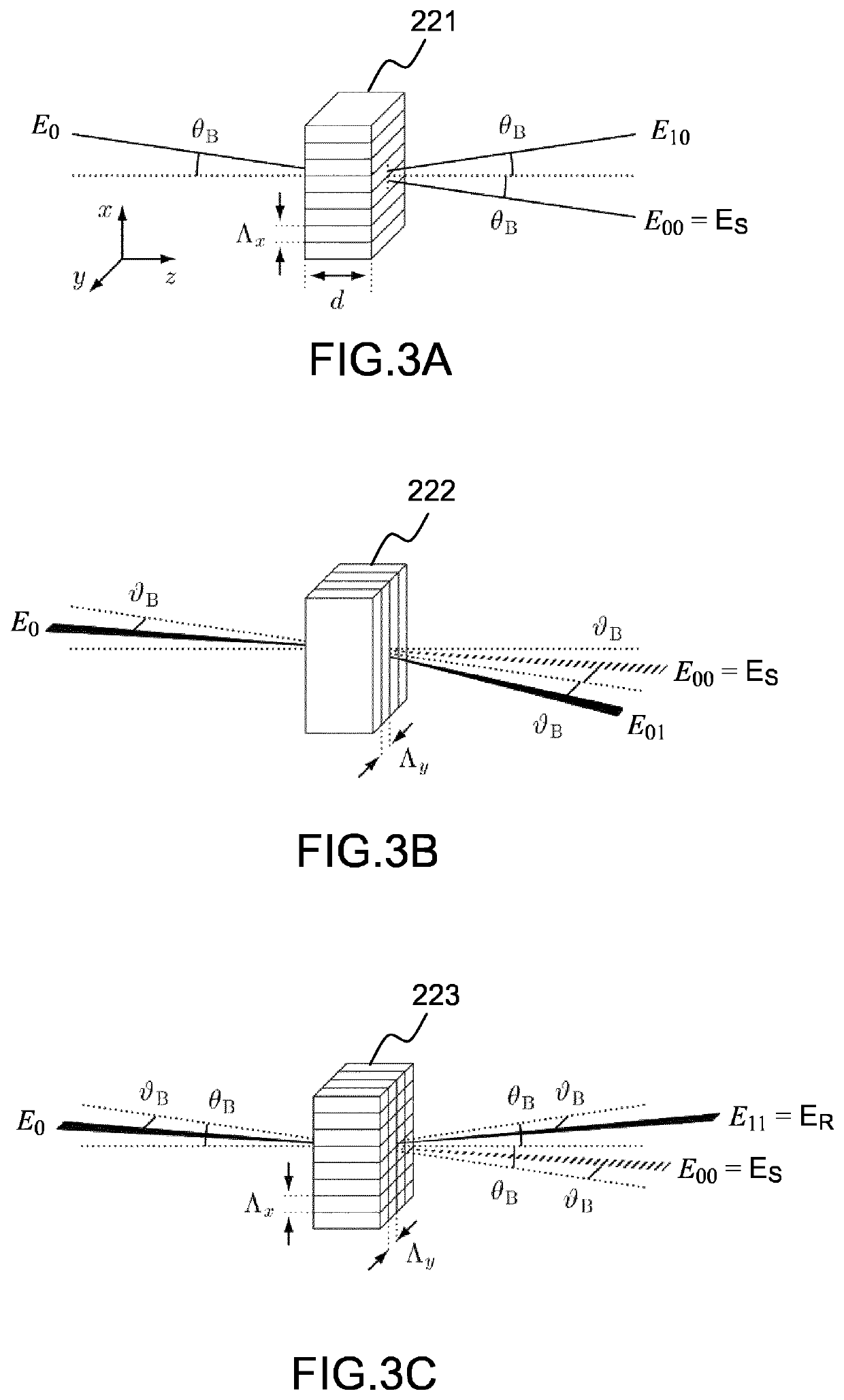Devices and methods for optical imaging by means of off-axis digital holography
a technology of optical imaging and digital holography, applied in the field of optical imaging devices and methods using off-axis digital holography, can solve the problems of small variations in the amplitude of a light wave used in conventional microscopy, limited sensitivity of the system, and sensitive to the measurement environment, so as to ensure the stability of the device and imaging quality, and ensure the effect of compact holographic imaging
- Summary
- Abstract
- Description
- Claims
- Application Information
AI Technical Summary
Benefits of technology
Problems solved by technology
Method used
Image
Examples
Embodiment Construction
[0038]FIG. 2 represents a diagram of an imaging device 20 example for an object OBJ according to this description. The object is for example a biological sample, for example a culture of living cells, or a material for microelectronics (semiconductor, glass, mirror).
[0039]The imaging device 20 includes a light source 21 adapted for emitting an illumination wave of the object OBJ, whose the electromagnetic field is noted EI. Although represented in transmission in FIG. 2, the illumination of the object can be done in reflection, for example when the object is a semiconductor, glass, or mirror. The light source is for example a laser, a super luminescent diode (or SLD), an electroluminescent diode (or LED according to the abbreviation of the Anglo-Saxon expression “Light-Emitting Diode”).
[0040]The imaging device 20 also includes an assembly 22 of one or more thick Bragg gratings to receive a wave coming from the object, with an electromagnetic field EO. The wave coming from the object...
PUM
 Login to View More
Login to View More Abstract
Description
Claims
Application Information
 Login to View More
Login to View More - R&D
- Intellectual Property
- Life Sciences
- Materials
- Tech Scout
- Unparalleled Data Quality
- Higher Quality Content
- 60% Fewer Hallucinations
Browse by: Latest US Patents, China's latest patents, Technical Efficacy Thesaurus, Application Domain, Technology Topic, Popular Technical Reports.
© 2025 PatSnap. All rights reserved.Legal|Privacy policy|Modern Slavery Act Transparency Statement|Sitemap|About US| Contact US: help@patsnap.com



